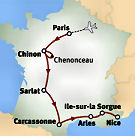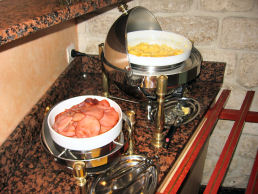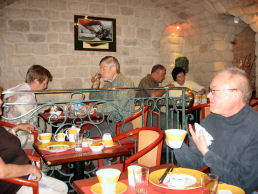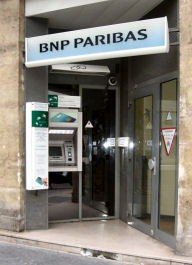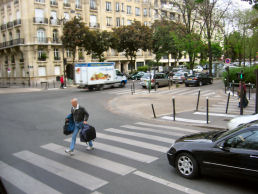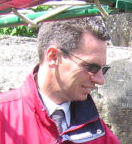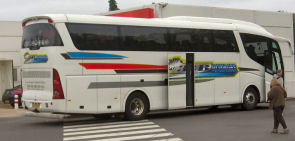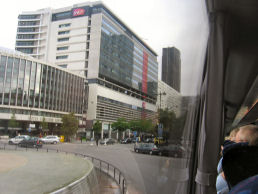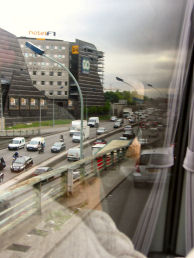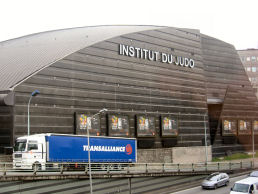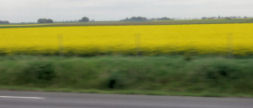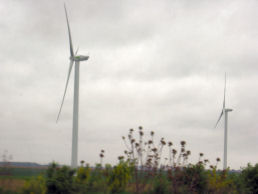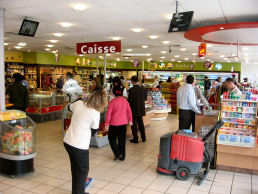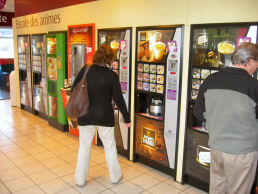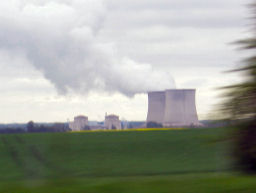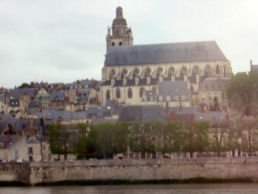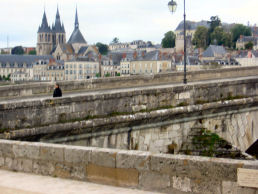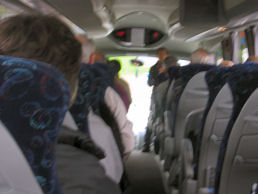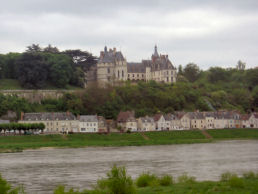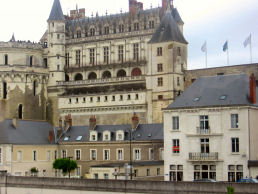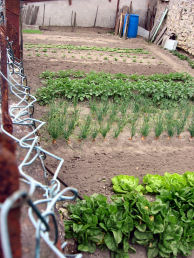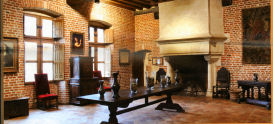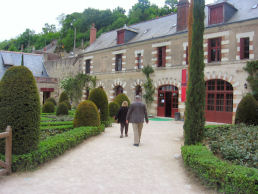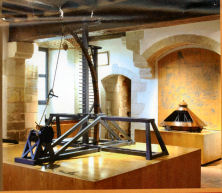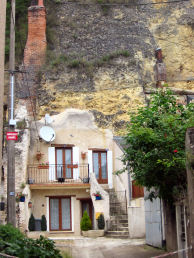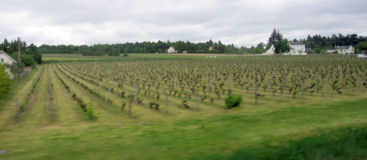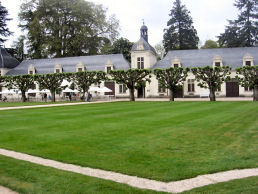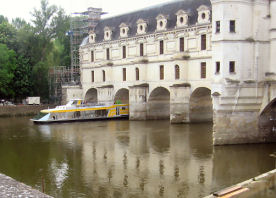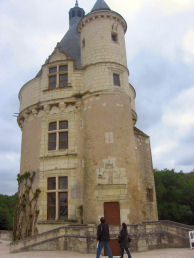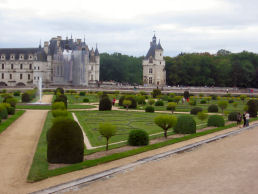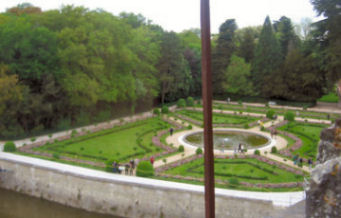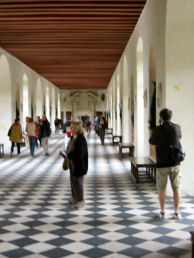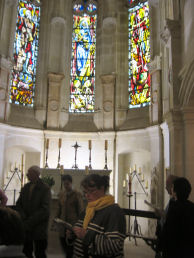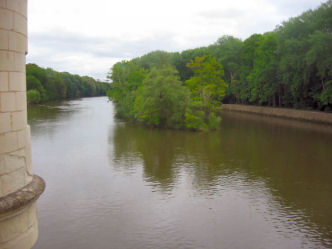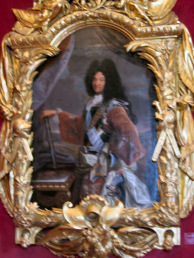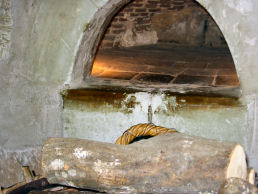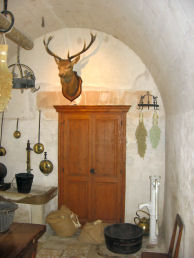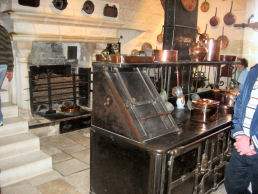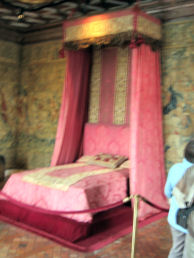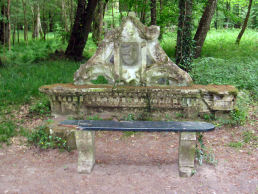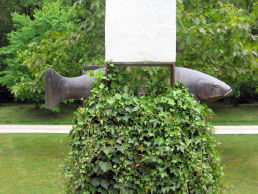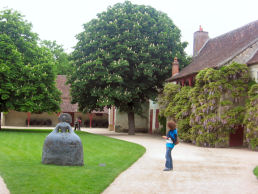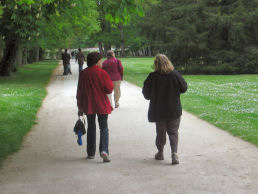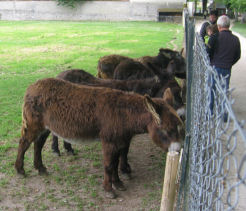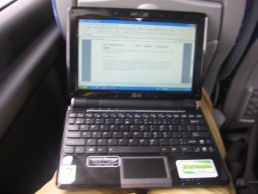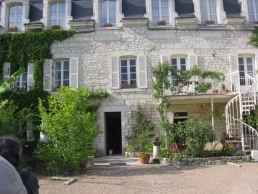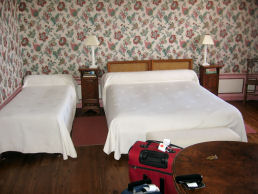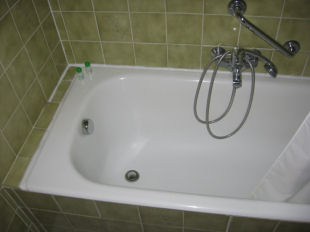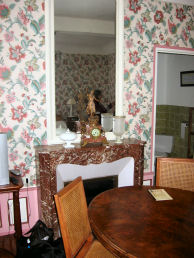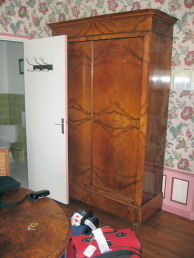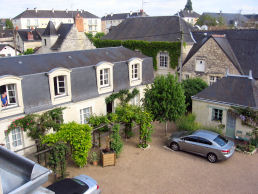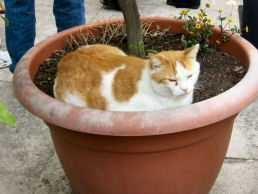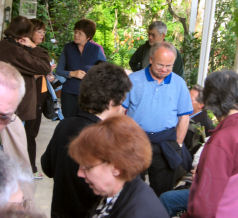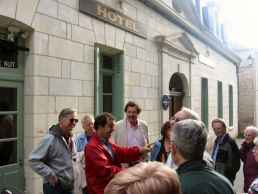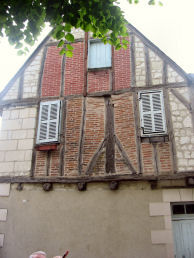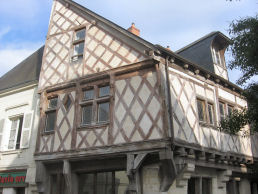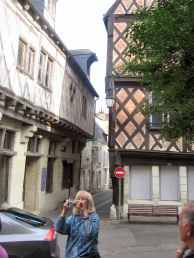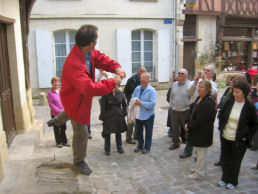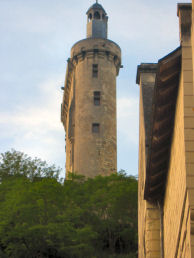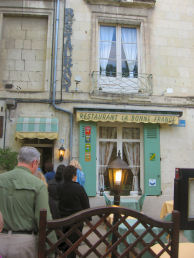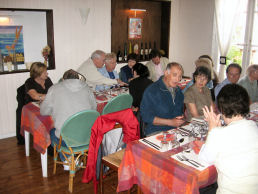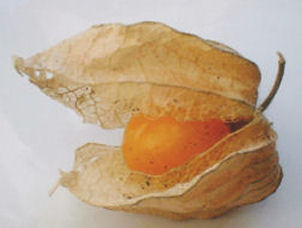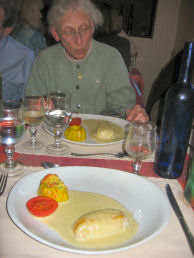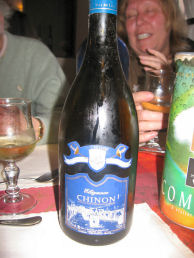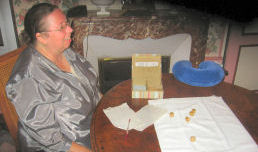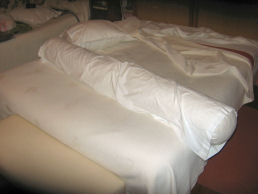Sue arose at about six o’clock to go to bathroom. I roused myself out of the sack shortly thereafter. We both felt a little better, but this was our first traveling day, and packing was always a stressful event. I had all of my possessions in my backpack and my big red suitcase.
I fired up the little computer and was relieved to discover an e-mail from my dad. He said that he had not written because he did not want to disturb my vacation. That is the way his mind works.
I learned from someone that Tom and Gigi were officially buddies. That meant that Roscoe Carnahan was stuck with me.Sue said that she needed time to get her stuff together, so I went down to breakfast by myself shortly after seven. The eggs were late in arriving, and the Canadian bacon was even later. I sat at Tom Stan’s table. Loraine left just after I arrived. Phoebe Liddle was at the adjoining table. She confessed that she was a morning person, but her husband was decidedly not one.
After breakfast I finished packing. I discovered within one of my black shoes the wad of American bills that I had secreted there a few days earlier. That certainly explained why the shoe felt weird on the walk home from supper at Le Bosquet.
I had enough time to sprint over to the ATM and withdraw a lot more money. I was uncertain when or even if we would see another BNP Paribas ATM, and I would not enjoy paying fees that I could avoid by carrying a few extra pieces of paper in my money belt. After I made the withdrawal and loaded up my moneybelt, I somehow lost my way; I only realized my error when I passed another gas station that was not Elan. I retraced my steps back to the bank and corrected my mistake.Back in the hotel room I took out my list of people on the tour and tried to visualize each individual. I had figured out all of the men by that time. I was still a little shaky on a few women, but I felt confident that that difficulty would be overcome by the afternoon.
Sue had left her CPAP machine on my red suitcase. I had not packed it into the suitcase yet because it was not in the bag in which she placed it back in Connecticut. I figured that there was more to come. Instead of asking me about this, she erroneously concluded that I was unwilling to carry it. She then wasted a good deal of time and mental energy stuffing it into her backpack. I got angry at her for being petty about this. To make matters worse, she ran into more trouble with the zipper that Chick had supposedly fixed. It was definitely not an ideal way to start our journey south.Despite all of this, I am proud to report that we were not close to being the last tour members to board the bus. Brad and Donna earned that distinction.
I found a seat in the back of the bus; Sue sat closer to the front. This arrangement had little or nothing to do with our tiff in the hotel room. We almost always split up on the bus trips. That practice has allowed us to meet more people and to have experiences that we could share later. I have never understood why most couples always do everything together. Obviously they must enjoy experiencing things together. We have always liked that too, but we also really liked to tell each other stories about our private adventures. An additional advantage was that when relating anecdotes to other people no one corrected you if an occasional embellishment or outright lie should somehow slip into the narrative.
Someone asked Patrick about the yellow fields that appeared almost everywhere once we had cleared the suburbs of Paris. Patrick said that the fields were canola. Someone must have speculated that they might be mustard. After disabusing us of this notion, Patrick mentioned that there had recently been a big to-do over the announcement of the closing of the mustard factory in Dijon.
We passed some wind farms. I had not expected to see huge windmills in France. Patrick averred that 85 percent of French power came from nuclear power plants. France was beginning to invest in renewable energy sources, but Patrick thought that it was still too dependent on nuclear power.Patrick said that the commonplace American notion that the French people were stand-offish or even rude was mistaken. He said that formality was assigned a much greater value in France. He explained the use of “vous” v. “tu” and explained that even if a Frenchman spoke nearly perfect English, he might not admit it if you asked him because he would interpret the question as inquiring whether his English was up to the standard of the Queen’s court. Patrick also said that when asking a French person, “Parlez-vous anglais?” you should never try to affect a good French accent. In fact, the worse you sounded, the more likely the other person was to respond in English.
We partook in a short French lesson using the most common expressions in the phrase book. Patrick said that the most difficult thing for him to learn about the English language (aside from making the “th” sound) had been the notion of stress on one syllable of each word. It had never occurred to me that each syllable in a French word received roughly equal stress. Every language that I have studied has had stressed syllables. I wondered how French poetry managed without a natural meter. By far the most difficult thing about trying to pronounce French words seemed to be the “r” sound. English-speakers are not accustomed to using that area of the mouth for anything but gargling.I wrote the phrase “Always a problem” in my notebook. Patrick may have been talking about immigration in France. He also mentioned that the birth rate in France was a little over 2, which made it one of the highest in Europe.
The bus reached the Loire River and drove along it for some distance. We saw towns, bridges and elegant châteaux. According to Patrick, the name “Loire” was derived from an Arabic word that meant “impassible.” Standard French pronunciation adopted the accent of residents of the Loire valley. The towns of the Loire region were critically important in the period of the Hundred Years War between France and England that transpired from 1360 to 1477. Joan of Arc was captured by the Burgundians in 1430 and sold to the British. The Inquisition put her on trial and burned her at the stake as a heretic. The Church later overturned her conviction, and in the twentieth century she was even named a saint. We learned that many kinds of vegetables were grown in the Loire valley. Patrick specifically mentioned asparagus and watermelon. They also raised mushrooms.We stopped for a two-hour lunch break in Amboise. Aside from the king’s château, the town's big attraction was Clos Lucé, the house in which Leonardo da Vinci spent the last few years of his life. All four members of the Connecticut contingent made the long uphill pilgrimage. Along the way we took photos of the houses of the troglodytes, people who literally lived in (man-made) caves in the side of the cliffs, which are made of tufa.
At Clos Lucé we bought tickets for the outrageous price of 12.50€ each. The house did contain period furniture, and a young lady in costume was in one of the bedrooms, but she was busy lecturing to some school children gathered at her feet. No photos were allowed in the house. This was almost certainly a brazen effort to sell the wares available in the gift shop. The basement featured models of quite a few of Leonardo's inventions. This exhibit was aimed at people with more mechanical aptitude than I was blessed with. Outside were some fairly nice gardens.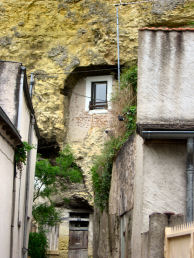
I sought out a spot from which I could see both the bus and the river. I ate the sandwich while seated on a bench on the bank. The sandwich was pretty tasty, but the bread was a little chewy for my taste. I waved to Roscoe and Gigi, who were strolling along the embankment.
The weather was a little chilly for my taste, especially up on the embankment where the wind was whipping. I boarded the bus as soon as Olivier opened the doors. I had seen Sue taking movies right across the street, so I was not too worried about her losing track of the time. Lee was the last one on the bus this time.
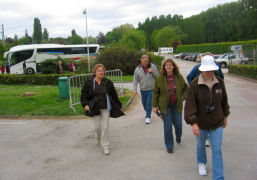
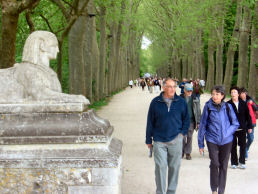
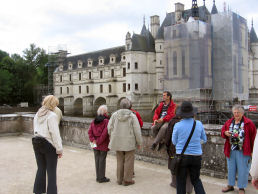
During World War I part of the ground floor of the château was used a hospital. In World War II the Loire River was the border between occupied France and the territory controlled by the Vichy government. Going through the château was the easiest way for fugitives from the Nazis to cross the Cher River. Patrick said to be sure to see the kitchens, which were at water level.
I walked through all of the rooms in the château. I found it pretty interesting. The primary challenge was avoiding the crowds. Tom Corcoran told me that when he tried to go upstairs, there were so many people on the staircase that he gave up. That was too bad, because the interesting rooms were below and above the main level. I went up a few minutes before Tom tried, and I had no trouble.
I also strolled around the two big gardens. Unfortunately my photos of the château fell far short of the of the images that I had seen on the web. The scaffolding on the keep did not enhance the esthetics.
Rather than return to the bus via the wide path that we had all taken to reach the château I explored a less well-traveled path through the woods.
At some point I struck the funny bone on my elbow on something. It bothered me for an hour or two. Nevertheless, I fell asleep on the bus. The landscape between Chenonceau and Chinon escaped my attention.
A little before we arrived at Chinon, Patrick disclosed some details about French wine. Every region of France except Brittany and Normandy produced it. The wine in Chinon was evidently pretty light. It was not aged much. He promised us a chance to taste it.
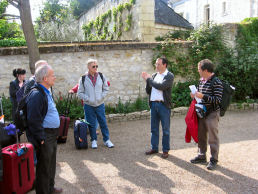
We later discovered that Roy and Betty were assigned a small house in the courtyard. They had the whole place to themselves. I had no hankering to trade with them, but the novelty would have been nice.
We met downstairs at 6:45 for a short tour of Chinon. Sue never has liked these orientation tours, so she stayed in the room. The group walked through the hotel’s back door to Rue Jean-Jacques Rousseau. We were told that if we returned to the hotel after 10 p.m. we would need to use the proverbial back door. The key ring that we were given also included a key to the hotel’s back door.
As we walked down the street, Patrick explained some interesting facts about the architecture of buildings in Chinon. At one time they built the houses to lean out into the streets and used a lot of wood. After a few devastating blazes, the former was outlawed, and a rule was passed requiring that any wood in the exterior must be covered with stucco or some other fire-retardant. Chinon served as a hunting area for the Angevin kings and other royalty. During the Hundred Years War Charles VII resided in the château when he was still the dauphin. Eighteen-year-old Joan of Arc came here in 1429 to try to persuade the young man to stand up to the British.
The château of Chinon was visible high up on the hill. Patrick informed us that there was an elevator that one could take to reach it. He did not seem to think as highly of it as the guidebook did. The book said that the remodeling would be done in time for the 2009 season, but evidently it was not yet completed.
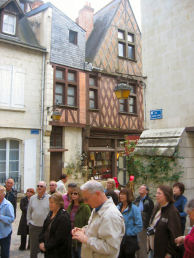
Tom Corcoran opined that this was the best meal that we had so far consumed. The only better one that I could recall was the delicious supper that Air France had served us on the evening that we departed.
I was intrigued to learn from Roscoe and Gigi that the situation in Belgium between the Flemish and the Walloons was analogous to the independence movement in Quebec. The Flemish were insisting that only the Flemish language be used in that section of the country. Gigi affirmed that she could speak Flemish, but she had not done so for a long time. I learned from Georgene that Roy, Dave, and Len went golfing once a week. For me the highlight of the evening (and the trip up to this point) was the disclosure that Dave and Roy had been in the Guinness Book of World Records for the longest successful egg toss. Their feat was covered by the newspapers in Vancouver. Dave said that they no longer held the record.I wrote down in my notebook that Dave threw the egg over 240 feet, and Roy caught it without breaking it. Dave said that the record now was over 330 feet. 110 yards is definitely a long way to throw anything.
Without hesitation I inquired as to what the French record was and whether the grocery would still be open at this time of night. I even volunteered to purchase the eggs. I was serious, but, alas, there were no takers.
Patrick escorted a group of us back to the hotel down the main street of Chinon. I took a photo of the car used by the Le Tennessee restaurant, which specialized in American fast food. I wondered who their customers might be. I seriously doubted that anyone from our group would set foot there. We ended at Place Jeanne D'Arc. It was very close to ten o’clock, but the gate was still open. Patti and Tom played a game of Yahtzee with us in our hotel room. At first we thought that the hotel’s dice were loaded. The first two players both rolled yahtzees with sixes. While we were playing, I looked up physalis on the computer. At some point we realized that today was Cinco de Mayo. With a last boost of energy I rolled four fours on my final turn and won the game even though I had crossed out the yahtzee.
I made the mistake of using only the absurdly long pillow that they gave us. After an hour or so my head was flat on the mattress. Thereafter I did not sleep very well at all.
